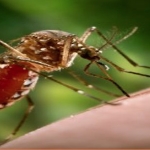Australian Infectious Diseases Research Centre (AID)
QIMR Berghofer Medical Research Institute, The University of Queensland
The Australian Infectious Diseases Research Centre (AID) combines complementary research housed at QIMR Berghofer Institute and UQ in partnership, in order to support a coordinated infectious diseases research focus. This combined research effort in parasite, viral, bacterial and fungal infectious diseases brings together basic sciences, clinical research and technological expertise. Our strategic objective is to build AID into a world-class centre for infectious disease research. AID will accelerate translational outcomes in diagnostics, vaccine development, and the design and application of new therapeutics against microbial pathogens.
- Website
- https://www.aidrc.org.au/
- Organisation type
- University Research Centre
- Joint UQ-QIMBR collaborative research centre
- Number of research staff
- 300-500 research staff
- Address
- Building 76, The University of Queensland, Cooper Road, St Lucia QLD 4072
Strengths and capabilities
- Bacterial pathogenesis
- Parasite biology
- Viral infectious disease
- Diagnostics
- Vaccine development
- Therapeutic development
- Fungal pathogenesis
- Clinical microbiology
- Arthropod vectors of infection
- Genomic epidemiology
Facilities and major equipment
- PC2 laboratories
- PC2 animal handling facilities
- PC3 laboratories
- PC3 animal handling facilities
- PC3 insectary
Lead researchers
- Professor Ian Frazer—HPV vaccine co- inventor
- Professor Rajiv Khanna AO—Successf ‘first in man’ Phase I clinical trials on adoptive immunotherapy for recurrent glioblastoma (GBM) and nasopharyngeal carcinoma
- Professor James McCarthy—Developed human challenge model for malaria
Achievements of the centre
- AID is working to eliminate the parasitic worm infection schistosomiasis in rural China through prevention and diagnosis
- Discovery of similarities in body’s reaction to dengue fever virus and bacterial infections results in clinical trials
- AID-led study has tracked the re-emergence of a childhood disease which had largely disappeared over the past 100 yrs
Key science sectors
More information about the sectors this centre is involved in:
Update details
Is this your centre? See any issues? Send a request to update your listing.
